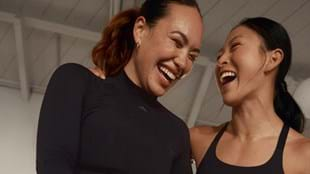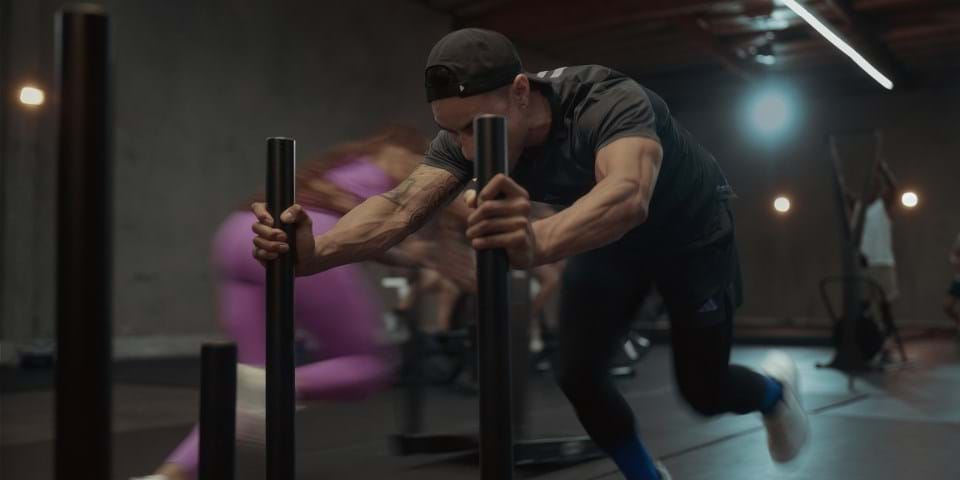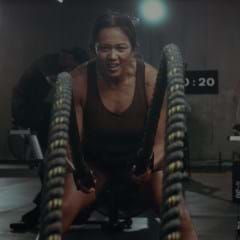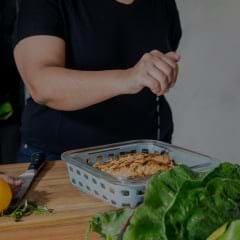Nutrition is always a hot topic among fitness professionals. In this piece, nutrition scientist Penny Matkin-Hussey breaks down how much protein you actually need, the risks of under-fueling your workouts, and why carbs really are your friend.
“You can be in low energy availability for two reasons. One is what we call inadvertent, where you don't realize how much you're burning, versus how much fuel you need. We see this quite a lot in elite athletes, especially where training volume increases through phases of their season, and their appetite doesn’t match it, because exercise is an appetite suppressant.
It can also be caused by a lack of nutritional knowledge about what you should be eating, or trying to eat a very, very clean diet. The thing is that when you’ve got high energy expenditure and you’re trying to eat a very clean diet, it’s very difficult to be able to eat the amount of energy to replace what you're burning, due to the volume of ‘clean’ food required.”
You loved this candid interview with Les Mills Ambassador Anthony, where he shares how teaching has helped him overcome his struggles with mental health.
“If I’m totally honest, sometimes I teach my best sessions when I’m feeling my worst. I know some people might think, I’m not going to teach today because I’m not feeling great. Whereas I know that if I do teach, I will feel better. I’ve got that discipline that, no matter how I’m feeling, I will always turn up. And as soon as the Warm-Up song hits, it’s game time.
Overcoming my internal dialogue that tells me I'm not good enough or I can't do it has been a struggle. I fight with dips in my mental health. It’s a constant battle and I always try to praise myself on how disciplined I am because sometimes getting out of bed is the hardest part of the day. Once I’m up and I’m doing what I’m doing, I’m fine. I’m alive. It’s just that initial challenge to get over that thought of: "I don’t want to be here".”

For many Instructors, teaching Les Mills classes is their “night job”, a joyous counterpart to their 9-5. 11 teachers from across the globe reveal what they do when they’re not wearing a microphone, including a voice-over actor, vet, and CEO.
“My job is nothing like CSI or those shows that solve crimes in 50 minutes. I don't drive a Hummer, I don't wear high heels, and we don't perform autopsies in the dark,” notes Charlotte Mitchell-Brennan, US, Death Investigator/BODYCOMBAT™.
“My day job helps me to be less judgmental. I know that everyone is different and going through their own hardships and situations. Grief isn't a linear process and it doesn’t just go away by itself. I understand that it can be difficult to just get through the gym door. I have the utmost gratitude for every person who shows up to my class, regardless of what’s going on in their lives. They committed, they got there, and made exercise a part of their day. That’s pretty huge.”
Getting ahead in group fitness can be competitive, from getting your first class to making it onto the TAP team in your country. Top Instructors including Glen Ostergaard, Khiran Huston and Amy Lu shared their tips for achieving your goals.
Even the best faced significant hurdles in their journey, as Glen Ostergaard candidly revealed: “I’d been set up to succeed in group fitness, I’d done my Initial Training with one of the top Instructors at the club and shown potential, so he’d been like: “Yeah bro, you’re gonna be really good and have your name up on the timetable.” Then I had to audition for the Group Fitness Manager and she said I wasn’t good enough. And I probably wasn’t, you know what I mean? So I was a bit disappointed, but I used it as motivation. ‘Obsessive’ is probably the word to describe how I felt. I got it in my head: I’m gonna do this and nothing’s gonna stop me from becoming a top Instructor.
“So basically I just pushed myself to the point where I believed it was going to happen. And I think that’s like anything in life… if you truly believe you can become something, and you work towards it, there’s nothing that can stop you. I still work like that today. I won’t stop until I achieve whatever I’ve set my mind on.”
5. How a BODYCOMBAT release comes together
2024 was the year of BODYCOMBAT! From a huge filming of BODYCOMBAT 100 in the iconic Studio 1 at Les Mills Auckland City, to global celebrations around the world, the martial arts-inspired program is definitely feeling the love. To mark this milestone, members of the Creative Team uncover how a new release is put together.
Vili Fifita picks up the story: “The team comes up with the initial choreography, which we test in live classes, and then it goes through a process of edits. These edits might be something like — pulling back on the combinations so they’re easier for people to follow in class. Making sure there’s a good balance between new ideas and familiar moves so we’re not overloading people with too much complexity. We want to appeal to the biggest audience possible and ensure everyone feels successful.
“Once the edits are complete, we all get into a room together and run a full class with Mark, Jackie [Mills] and Diana [Archer Mills] to get their feedback. They might think a song is too fast, or too slow. Maybe some of the moves don’t feel great together as a whole. We then make the final changes, and the release is signed off for filming.”
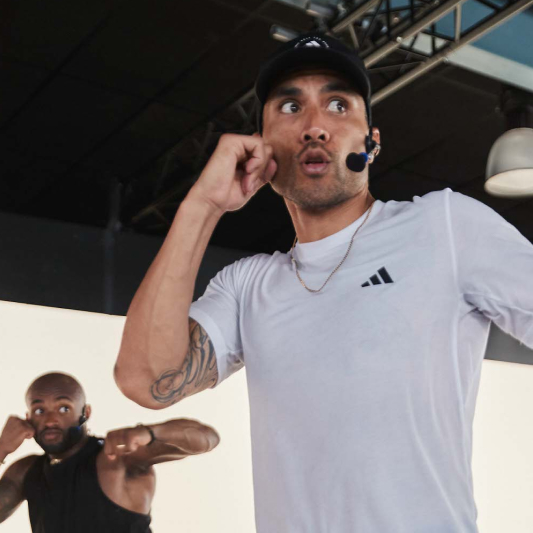
The role of fitness Instructor naturally attracts those who like to help others and will often put other people’s needs before their own. The downside of this is that when you’re too helpful — saying yes to covering more classes than you can manage, agreeing to take on an extra class that means sidelining your own training — it can be easy to burn out. Instructors including House Chaalane, Marlon Woods and Kaylah-Blayr Fitzsimons-Nu’u revealed their tips to looking after yourself.
For Natasha Vincent, the secret is striking the right balance: “It can be easy as Instructors to take on another strength class, or another cardio, but it’s really important to make sure you’ve got a routine that cares for your body and isn’t too heavy on one thing. And if you do have a week where you take on more than usual – covers, launches etc – then think about how you de-load from that week and then build back up to normal. We often do far more exercise than professional athletes, and they schedule in lots of recovery and periods of de-loading. If every day for you is a high-performance day, then of course you’re going to burn out. That’s been my biggest learning this year. I used to just use my classes for training, but now I attend other people’s classes to ensure my training is balanced.”
There’s a new approach to programming in the Group Training team, with ‘Creatives’ now replacing ‘Program Directors’ and teams of people collaborating across programs. Members of the team including Dan Cohen, Mark Nu’u-Steele and Gandalf Archer Mills discussed the benefits of this strategy.
Khiran Huston shared the improvements this is bringing to music used in the programs: “The music selection process takes months and months. As a creative music team, we listen to hundreds and hundreds of songs each quarter across all programs. When listening, we always keep the program's essence forefront of mind — it's really important that we maintain the DNA of the program whilst injecting new energy. The songs we select need to bear repeatability whilst invoking emotion each time you play them in your clubs.
“The way people are exposed to music has completely evolved — gone days where you tuned into Top of the Pops or the Top 50 countdown. A song or artist that might be completely new to one person could be extremely loved and well known to another! This means we need to expose ourselves to many different types of music to collate the very best from around the globe.”
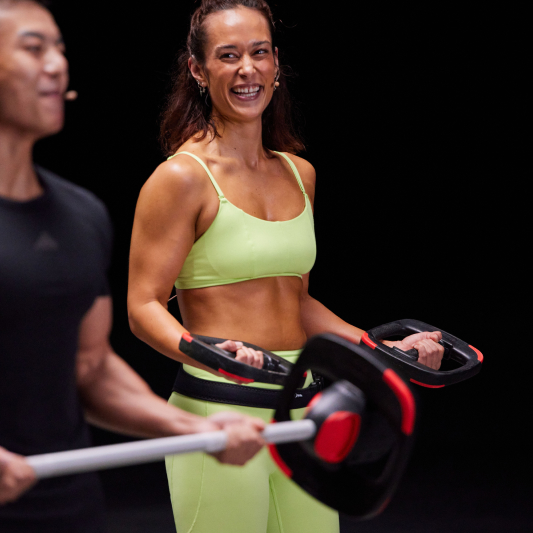
In a world where people can now get AI to write them a personalized workout, it’s more important than ever that we make people feel special in our classes. Otto Prodan and others spilled their secrets to creating unmissable experiences.
For Reagan Kang, it’s all about connection: “The best advice I was given is that it's not about what you say, but how you make people feel. To me, teaching is an act of love. I love seeing people succeed when they implement feedback, or they have an ah-ha moment when they spend time learning from you. That feeling is priceless — knowing that you're able to add value to someone else's life.
I focus a lot on connection. I focus on making people feel like they’re the only person in the room. I learn names and I try to talk to everyone in the room, to make them feel connected so that the next hour is just you, me, the music and the workout. I want them to forget everything else that’s going on in their lives so we can just focus on what we're doing. Then when they leave the class, they feel a lot better about themselves.”
Pilates is having a resurgence and we’re here for it. To mark the worldwide launch of LES MILLS PILATES, we asked New Zealand Instructors why they would recommend teaching the workout.
“LES MILLS PILATES integrates the fundamental movements of Pilates with breathing, offering options to accommodate different levels of mobility and flexibility,” notes Yogini Nimita Morarji.
“In other words, you don't have to be able to do the splits or wrap your leg around your head to teach it! This adaptability makes it accessible, so you'll attract a wide demographic of members with varying fitness levels in classes. It's achievable for everyone.”
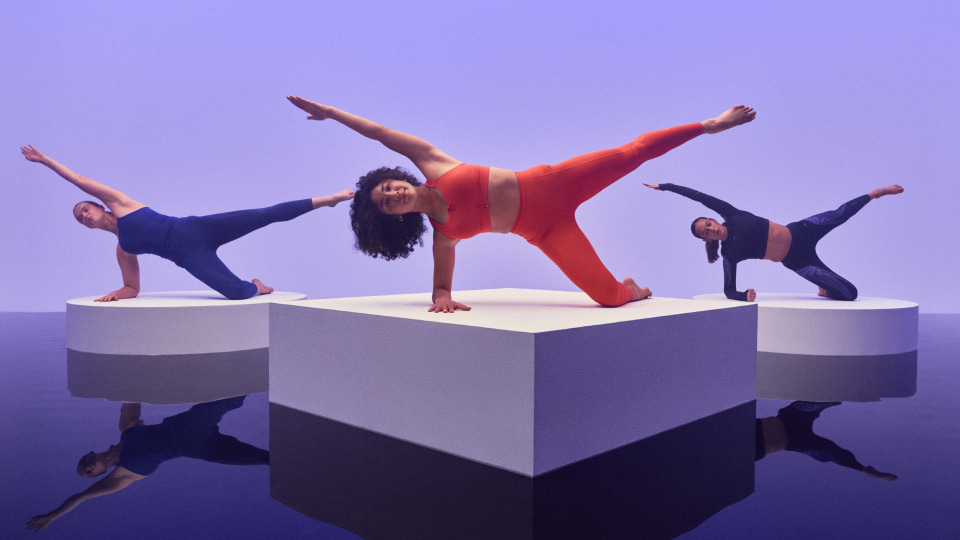
Instructors from around the globe shared how submitting a video of them for a grade review has helped them level up their teaching.
“I’ve learned it never gets easier,” says Richard Harding. “You can have a class full of people, but the tripod in the corner feels like a specter in the room. I still cringe a little when watching the videos back, but I’ve become more accepting and comfortable with the process; acknowledging the impact of self-review and my desire to develop.
“It’s hard to not just focus on the overall Level, but it’s important to look beyond this to what is always really helpful and detailed feedback. Taking the feedback as supportive and not as criticism is the most powerful thing you can do. The exciting part then is to plan your next steps on how you can use the feedback to improve your teaching.”



